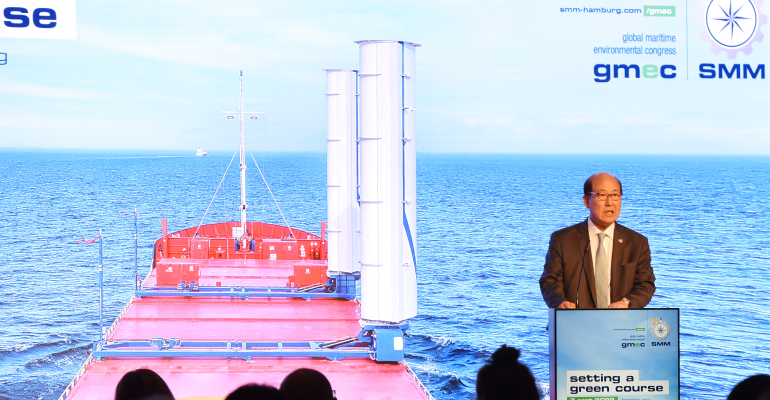Speaking at the global maritime environmental conference (gmec) at SMM 2022, panellists discussed the prospect of vessels with wind as a primary source of propulsion, rather than as assistance to a fuel-burning prime mover.
Primary wind propulsion offers carbon savings of 50-60% over conventional vessels, with some vessel concepts even carbon negative – harvesting wind energy at sea to produce hydrogen.
“This is a different paradigm, and all of the regulatory processes, all of the capacity, all of the knowledge within those regulatory processes, comes from the fossil fuel burning procedures,” said International Windship Association (IWSA) Secretary General Gavin Allwright.
“We're almost having to rewire an entire system to look at a different energy source.”
Allwright said that classification societies were starting to bring in expertise and designate point people for wind propulsion. Class guidelines for wind propulsion are improving, but enabling primary wind propulsion will involve a more significant change to rules.
“The current regulatory framework doesn't work well with primary wind… it's pretty much based on a fuel basis in IMO and the EU,” he said.
Even the language around wind propulsion is based on a fuel-based system. CMA CGM recently put out a tender for a 2,500 teu primary wind container vessels, but those percentages are a comparison to operating on fuel.
Operating as normal with wind assistance is not the most effective use of the wind, said Allwright, as weather routing to tap into the wind and speed optimisation promise greater gains.
Cargo owners are interested in the concept of primary wind power as they look to reduce their carbon emissions, said Allwright, and successful projects with wind as primary propulsion will require long-term buy-in from charterers to reduce finance risk.
Using the example of a recentl Michelin tender for primary wind transatlantic freight, Allwright urged charterers and cargo owners to support projects with 10+ year contracts.
Copyright © 2024. All rights reserved. Seatrade, a trading name of Informa Markets (UK) Limited.
Add Seatrade Maritime News to your Google News feed.  |

